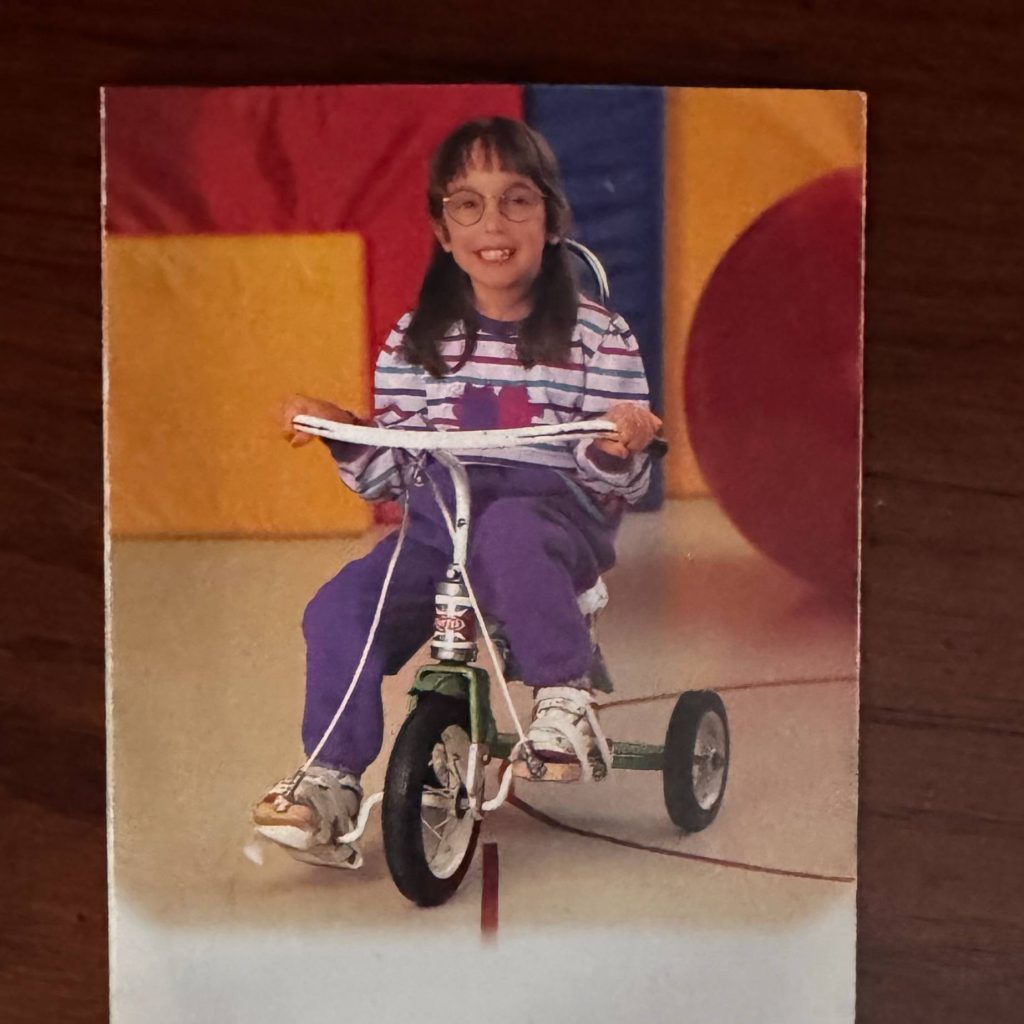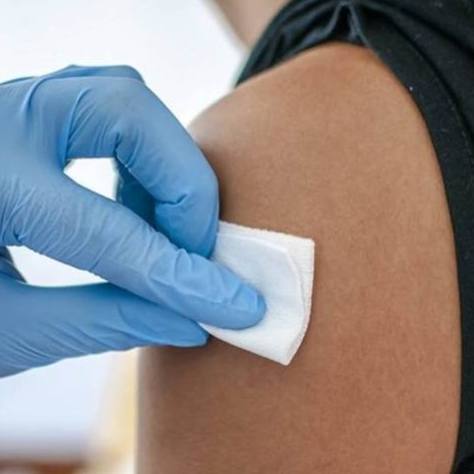-
Care team’s persistence saves social worker’s life

Callie Jones, a social worker for Mayo Clinic Health System (MCHS) in Mankato, Minnesota, spends her days helping patients and their families navigate their healthcare journeys. She takes pride in living by Mayo Clinic's primary value — the needs of the patient come first.
In early February, however, Callie's role quickly flipped from social worker to patient when she began experiencing life-threatening symptoms and complications related to her baclofen pump — the device that helps her to move through life without the spasms or stiffness that often come with having cerebral palsy.
Where it all began
As a child, Callie was diagnosed with spastic cerebral palsy — a neurological condition that can affect movement and posture.
"My muscles were so stiff that it made everyday tasks like diaper changes and eating meals very difficult," Callie says.

At just four years old, Callie was the youngest patient at the time to receive a baclofen pump surgically placed under the skin in front of her abdomen. This pump delivers medicine slowly and continuously through a port that connects to a long catheter. The catheter travels around her abdomen and introduces the medicine directly into her spinal canal to help relax her muscles.
Dr. Cole Cheney, pain medicine physician at MCHS in Mankato, says that baclofen pumps are normally replaced every six to seven years. In addition, it is often routine to adjust medicine delivery dosages over time as the body's needs change. However, he noted that sometimes, pumps can require troubleshooting.
"If the medication is disrupted, the patient can start feeling sick," Dr. Cheney says. "Receiving too much medicine or too little can be life threatening."
That's why when Callie started to feel strong "itchy and twitchy" symptoms earlier this year, she knew it was serious and quickly sought medical attention in Mankato.
From social worker to patient
Following rounds of tests and scans, the Pain Medicine team found that Callie was experiencing severe baclofen withdrawal, thought to be due to a kink in her catheter. The complication can be fatal without quick intervention.
The team quickly performed surgery on Feb. 10 to fix the kink, but Callie's relief was short-lived. Her symptoms continued on and off for the next six weeks. All the while, her care team meticulously tested, explored and exhausted all causes and options to help find the root cause of Callie's symptoms. Her care required extensive involvement from patient access staff, nursing staff, radiation technologists and other healthcare professionals from the Emergency Department, Pain Medicine, Radiology, the Intensive Care Unit, Anesthesiology and Hospitalist teams.
"Callie's pump consistently showed normal medication values, which initially suggested that the pump was functioning correctly," Dr. Cheney says. "For that reason, we avoided intervening at the pump site for as long as we could. It was only after we had ruled out every other potential cause of her symptoms that we determined a pump replacement was the necessary next step."
This would be Callie's most invasive surgery yet, and was particularly high stakes, as Callie has spinal rods that increased the risk of her team failing to re-gain spinal canal access for the device if they lost that during surgery.

However, it was a risk that proved worth taking. Six clinic visits, four hospital admissions and three surgeries later, Callie was back to feeling like her old self — and grateful she turned to her workplace back in February when she first sensed something was wrong.
"If it wasn't for the quick actions taken by the Pain Medicine team and the ability for me to access care locally, my situation truly could have had a very different outcome," Callie says.
A story of teamwork, persistence and partnership
Dr. Jason Dauffenbach, MCHS Minnesota Pain Medicine chair, says Callie's successful outcome was the result of a true team effort.
"We utilized the close relationships between our practice in Mankato and the expertise and experience of colleagues across the health system and in Rochester," said Dr. Dauffenbach.
While the malfunctioning of her device led to a traumatic and emotional time, Callie says she leaned on the positives in her situation — being close to home, near family and colleagues that treated her like family.
"My coworkers would visit me before or after work — they decorated my hospital room for my birthday and they even brought my favorite drink to brighten my day," Callie says.
Now, after more than 10 years of caring for others, Callie has an even deeper appreciation for and understanding of what it means to live by Mayo's RICH TIES values of respect, integrity, compassion, healing, teamwork, innovation, excellence and stewardship.
"With the team's expertise and efforts, I was able to remain in my home community and receive the care and intervention needed from a team that knew me and my medical complexities best," she says. "I had an amazing team."
Related story:
Related Articles







